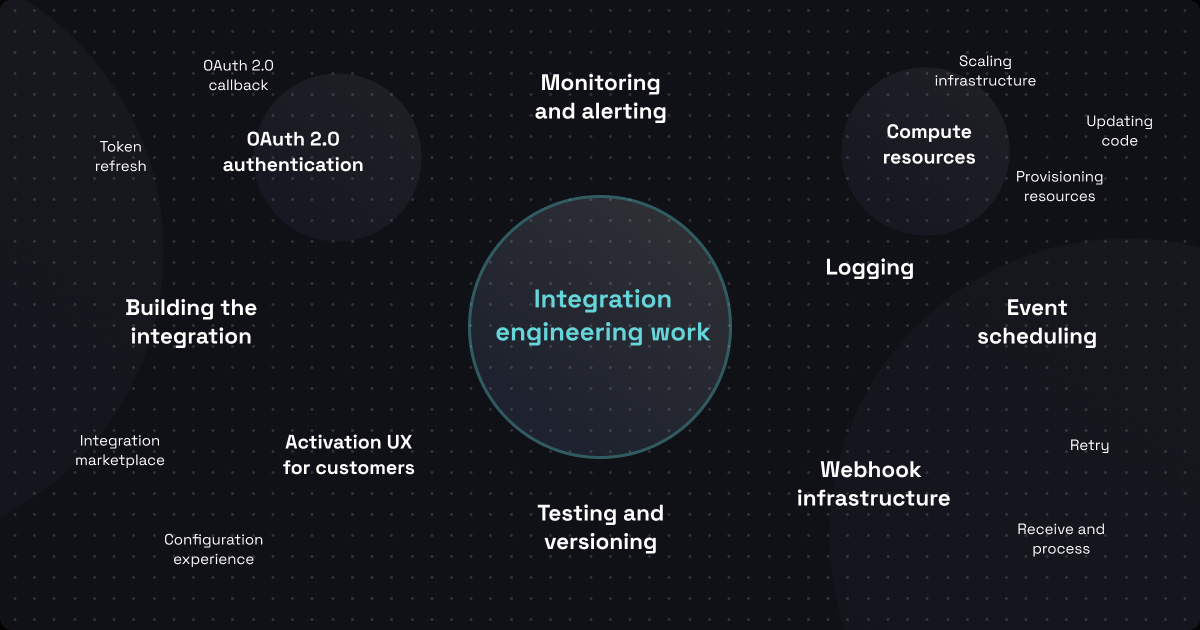For many B2B SaaS companies, providing integrations to your customers' other apps is essential to your business. Actually delivering those integrations, however, can be quite the challenge. They're incredibly time-consuming, and cause pain points that bubble up everywhere throughout a software business.
If you're looking to improve your integration capabilities, you've likely heard of embedded integration platforms (also known as embedded iPaaS for "embedded integration platform as a service"). They provide a set of tools to help SaaS teams build integrations faster, deploy and manage them at scale across your customer base, and provide an embedded white-label marketplace of integrations that your customers can self-serve.
Wondering if an embedded iPaaS is right for your product? Based on our experience working with SaaS companies in many different verticals, here are some common signs that you'd benefit from implementing an embedded iPaaS like Prismatic.
1. Your developers spend too much time building integrations.
What is the most obvious sign that you could benefit from an integration platform? Your developers spend far too much time building integrations, often at the expense of working on your core product. This isn't surprising. If you're building integrations from scratch, there's simply a lot to do: connecting to third-party applications (which don't always have nice modern APIs!), mapping and transforming data, handling auth, standing up infrastructure to run your integrations, and more.
How an embedded iPaaS can help: An integration platform like Prismatic takes much of the integration burden off engineering teams. Instead of developers coding integrations from scratch, non-devs or more junior developers can take on much of the workload by building integrations in an intuitive low-code integration designer, using built-in API connectors and components for auth, logic, and more. Capabilities like code components and custom connectors ensure you can build any integration you need.
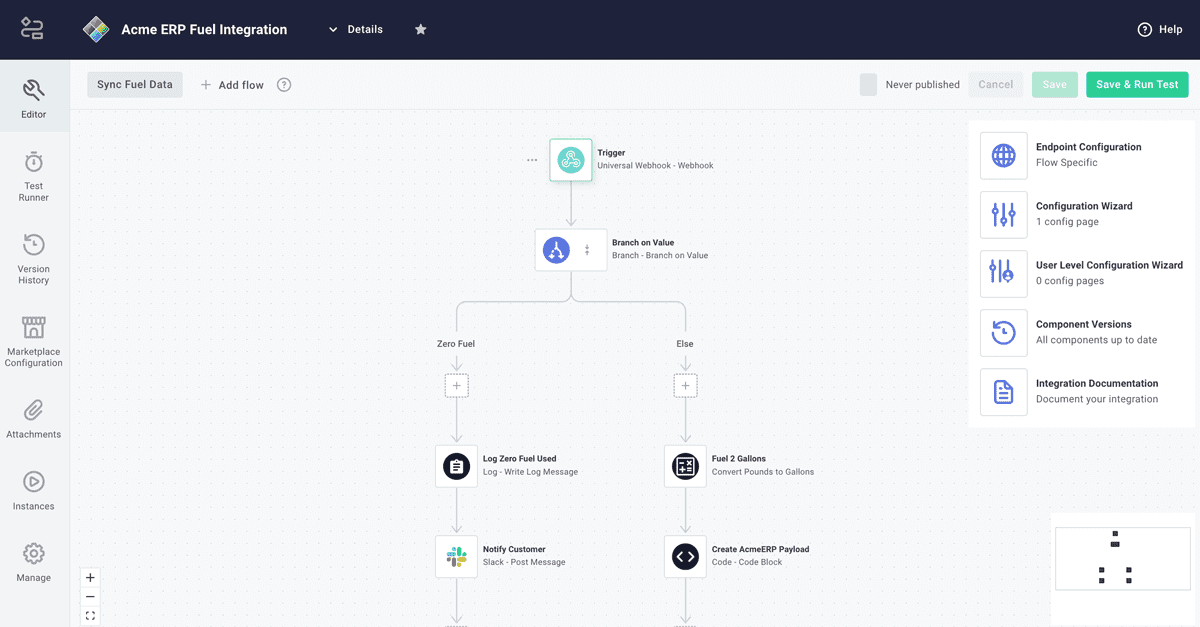
Customers can use an embedded workflow builder to create their own integrations between your product and other apps they use. This allows you to say "yes" to highly specific integration needs without having to spend your teams' time building and maintaining bespoke integrations that don't benefit your broader customer base.
Additionally, an integration platform includes a purpose-built environment for running your integrations so your engineering team can stop spending time setting up and maintaining special infrastructure.
2. You're losing deals due to integrations you don't have.
How often do you lose a deal because your SaaS app doesn't have the integrations your prospects need? Or do you lose deals because your competitor has specific integrations that you don't? If your SaaS app doesn't integrate with a prospect's critical applications, the prospect will find a solution from another vendor that does. Do you have enough integrations to stay competitive in the long term?
You are probably losing deals because you don't have integrations or can't build them quickly enough to make a difference.
How an embedded iPaaS can help: If you don't have an integration, you can build it quickly or give a relatively short timeline for its development. That flexibility on your part, coupled with a robust integration marketplace, assures prospects and customers alike that you are invested in native integrations for your app and understand their importance.
But what if the prospect wants an integration that isn't on the list? With an embedded integration platform, you can quickly build a prototype of the integration as part of the sales process.
If the prospect needs specific functionality, and you've either determined that it should be excluded or added later, addressing that functionality via an integration could move the deal back into the win column.
And the embedded workflow builder places the power of building integrations into the hands of your customers. When a customer has an integration scenario that doesn't have broad applicability across your customer base, you can now say, "Yes, we have a solution for that."
3. Integrations are slowing down your customer onboarding.
If integrations are a blocking factor in how quickly you can onboard new customers – usually because you're waiting for engineering to build those integrations or build a new version of an existing integration because the new customer needs something sliiiightly different – you should definitely consider an embedded iPaaS.
How an embedded iPaaS can help: The integrations you build using an embedded iPaaS are productized, which means that just like your core product features, they are reusable across all of your customers.
An embedded iPaaS makes it easy to build your integrations in a configurable way and create an intuitive wizard for your customers to use. Does a new customer need temperatures in Fahrenheit rather than Celsius? Or wants to add phone and email address info to the payload? Don't rebuild the integration; add new configuration options to your existing integration! New customers can now activate and configure the integrations they need with zero dev involvement.
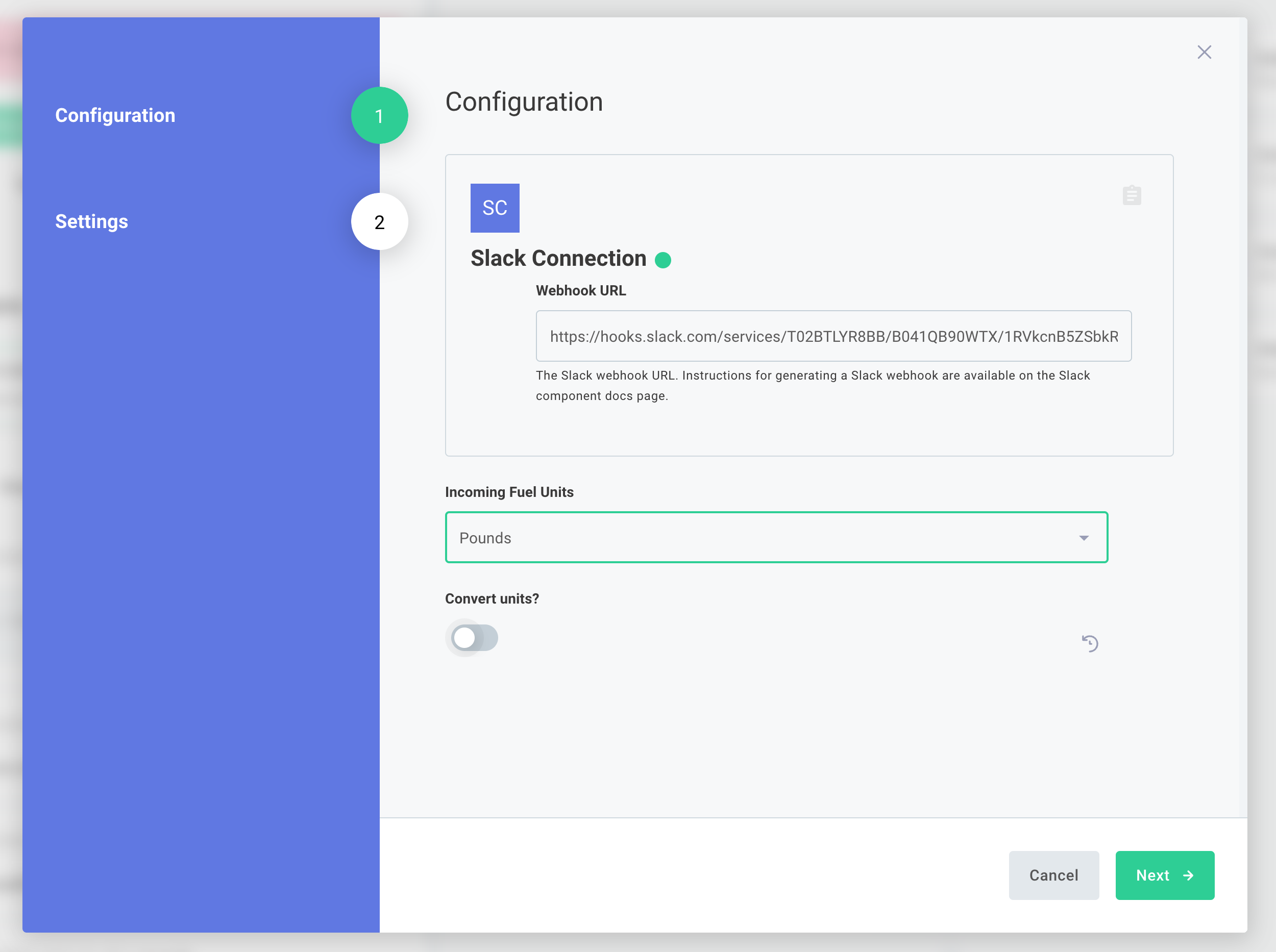
4. Your customers don't have integration tools.
Are your customers in the dark about their integrations? Do they have to contact support when they have questions like "Is my integration running? When was it last run? Were any records transmitted?" Perhaps worse, are you and your customers missing integration opportunities because they're unaware of the integrations you offer?
How an embedded iPaaS can help: Integration platforms include an integration hub that can be white-labeled and embedded in your product.
It provides customers with self-service tools, including an integration marketplace where they can discover and activate your integrations, thus taking advantage of more of them. This ultimately increases your product's stickiness and reduces churn.
It also offers detailed integration logs and the ability to update integration configurations. These features enable customers to answer many of their own questions, improving their integration experience and reducing your support volume. Win-win.
5. You do a lot of integration rework.
How often do you deploy an integration to a customer only to find out it doesn't work like they expected or just plain doesn't work? That's when you find your team doing costly rework to fix or overhaul an integration, with many slow iterations of troubleshoot/attempt fix/deploy/test/repeat.
How an embedded iPaaS can help: Communicating with customers and third-party vendors about integrations will always be challenging, but an embedded iPaaS makes it far easier to swap out or update components, test integrations as you build them, inspect detailed logs, and iterate quickly if something's not right.
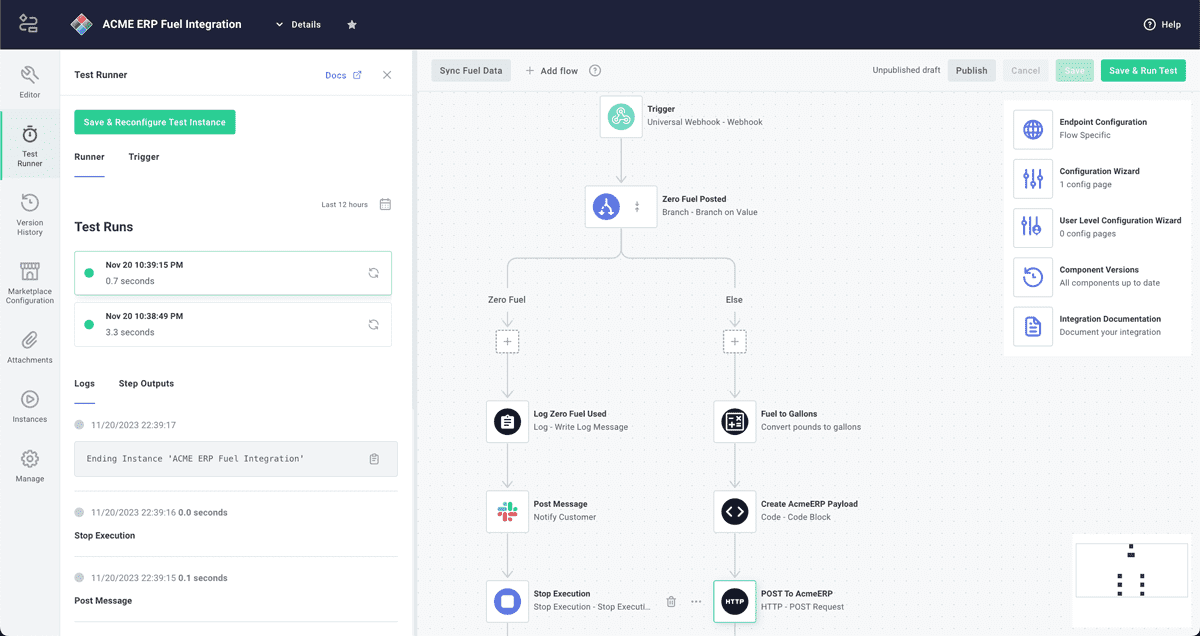
6. Problems with live integrations catch you off guard.
When there's a problem with one of your customers' integrations, does the customer notice before you do? When they inform you of the problem, are your support and engineering teams left scrambling to figure out what went wrong and fix it?
How an embedded iPaaS can help: With an embedded iPaaS, your integrations run on purpose-built infrastructure designed to ensure reliability and scalability. That prevents many of the issues that cause integration problems in the first place.
When problems aren't preventable (often because the problem is on the other vendor's side), an embedded iPaaS can help you handle them quickly. Configurable monitoring and alerting lets you notify the appropriate teams when an integration encounters an error or hasn't run in a specified interval, so you can inform the customer (rather than the other way around!) and investigate proactively. Built-in logging helps you troubleshoot and resolve issues faster.
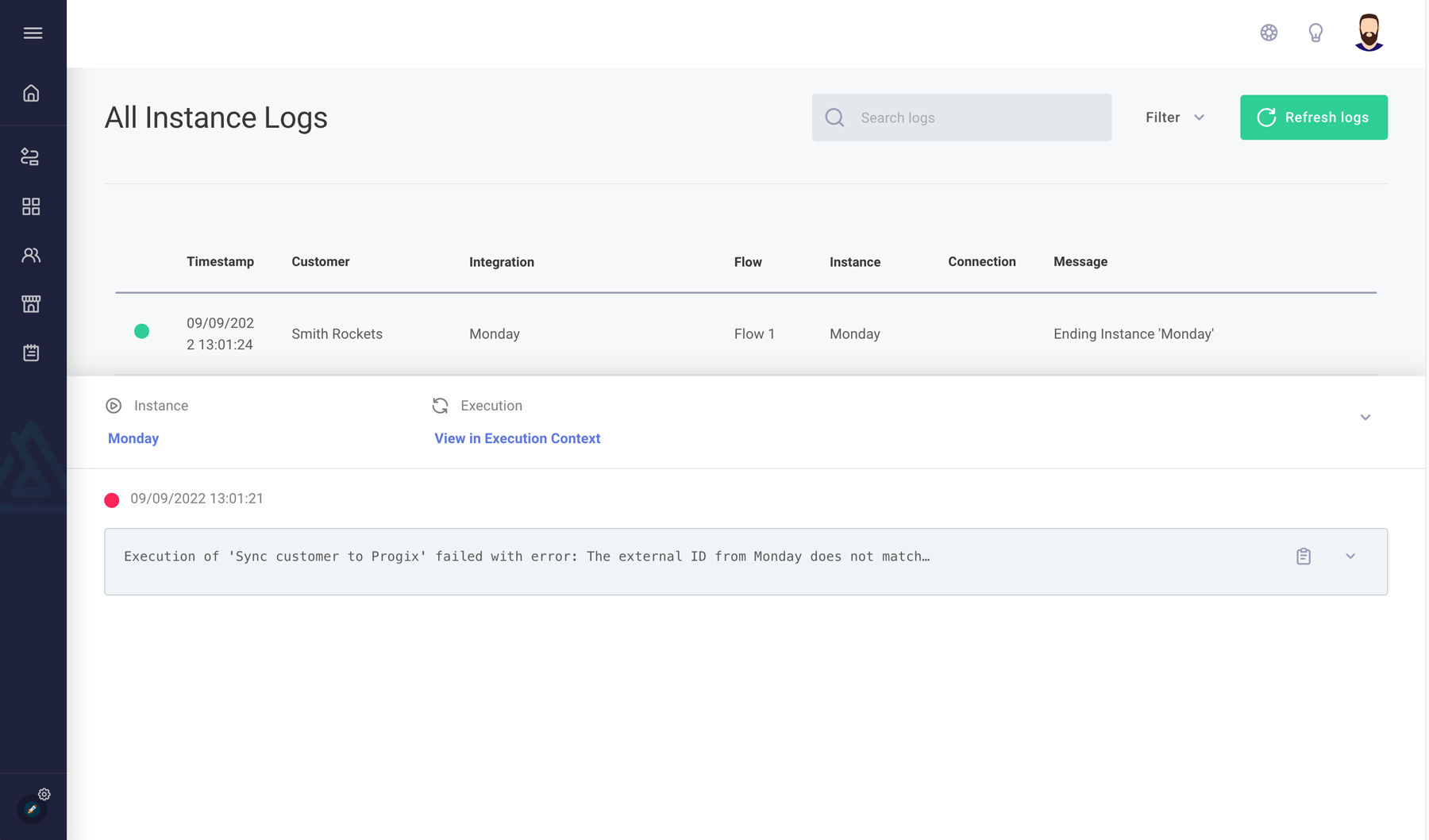
Taking the next step
If any of these scenarios hits a little too close to home, consider implementing an embedded iPaaS. The ideal system will address your specific pain points and boost your integration capabilities across the board – from how you sell and build integrations to how you deploy and support them.
Prismatic helps B2B SaaS companies facing challenges like these to provide SaaS integrations in an efficient, scalable fashion. Schedule a demo and we'll show you how Prismatic can meet your specific integration needs.


